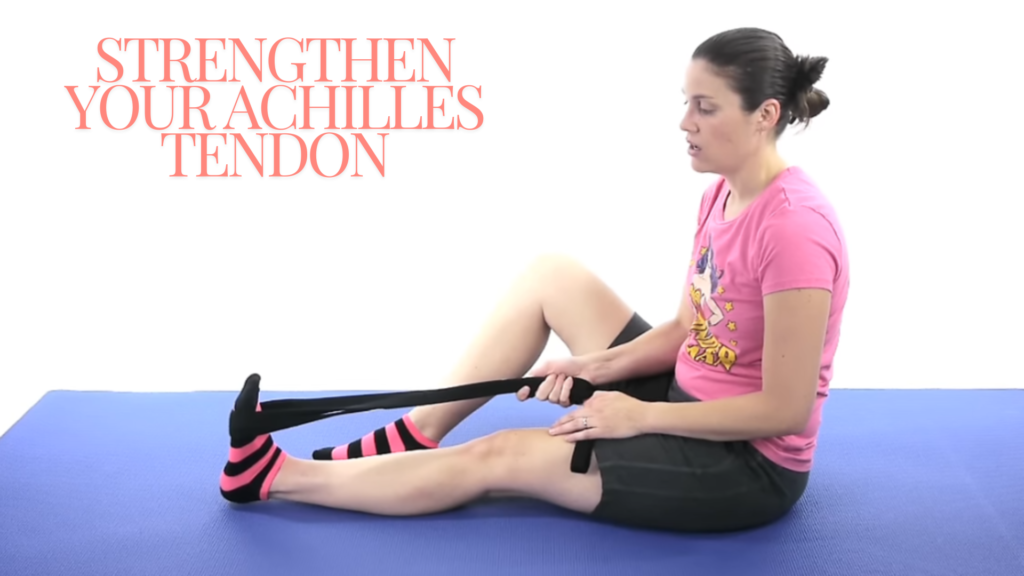Named by the name of the Greek hero Achilles, Strengthen Your Achilles Tendon is a very important anatomical part, connecting the calf muscles with the heel bone. It is the thickest and strongest tendon of our body that makes us move up on our feet, walk, run, and jump. Still, due to such a pivotal role in mobility, it has become vulnerable to getting injured. The safe strengthening of this tendon is therefore quite important for all athletes, fitness enthusiasts, or anybody else interested in developing and maintaining healthy movement patterns. This article explores how you can strengthen your Achilles tendon safely so that it remains healthy and functional for the long haul.
Understand the Achilles Tendon
One must understand the anatomy and physiology of the Achilles tendon before developing exercises that will strengthen it. The Achilles tendon is attached from the calf muscles down to the foot, thus transferring the force so that one can push off the ground. Due to its continuous use, the Achilles can suffer overuse injuries like tendinitis and tendinosis. Safely strengthening this tendon requires a combination of exercises, proper form or technique, and knowledge of the body’s limits.
Why Strengthen the Achilles Tendon

The safe strengthening of your Achilles tendon can help prevent injuries, improve performance, and achieve overall lower body strength. Weak or tight Achilles tendons may result in pain, reduced mobility, and even ruptures, which can be serious—killing—exercise-related injuries with very long rehabilitation periods. With a focus on safe ways to strengthen, you can help to ensure your tendon remains healthy and functional.
Safe Strengthening Techniques
Warm-Up Properly
Warm up before any type of exercise. An effective warm-up will increase blood flow into your muscles and tendons, making them more receptive and safer to stretch. Dynamic stretches, such as leg swings and calf raises, can stimulate the Achilles tendon before more challenging activity.
Eccentric Exercises
Eccentric exercises, those that involve lengthening of the muscle under tension, are more effective in strengthening the Achilles tendon. Of these, the eccentric heel drop is among the most prescribed.
Eccentric Heel Drop:
Stand with the balls of your feet on a step or platform with your heels hanging off the edge.
Slowly raise onto your toes using your uninjured leg.
Slowly lower your heel below the step level upon transfer of weight onto the injured leg.
Do 15 reps for 3 sets, twice daily.
This exercise will give strength and resilience to the tendon, enabling it to bear the load progressively.
Calf Raises
Achilles tendon strengthening can be done by performing calf raises. While some people find this exercise easy to do with feet on the ground, others prefer to perform it on a step for more range of motion.
Calf Raise:
Stand at shoulder-width apart.
Slowly raise your heels off the ground as far up as possible.
Hold it for a few seconds at the top, then slowly lower the heels back down.
Do 3 sets of 15 repetitions.
You can progress to add more challenge to this exercise by performing single-leg calf raises or using weights.
Toe Walks
it strengthens the calf muscles and the Achilles tendon through controlled movement.
Toe Walk
Stand on your toes and walk forward for about 20 yards.
Be sure to move slowly and in control.
Do for 3 sets.
This exercise won’t just strengthen the Achilles tendon; it will also increase your balance and coordination.
Resistance Band Exercises

it can be used to add some resistance to your Achilles tendon exercises, which forces greater strength and flexibility out of them.
Resistance Band Calf Flex
Sit with your legs straight out in front of you, with a resistance band looped around the balls of your feet. Pull the band toward you to create tension. Point your toes away from you, then slowly return to the starting position. Perform 3 sets of 15 repetitions. STRENGTHENS Calf muscles and Achilles tendon BUILDING STRENGTH AND
Probably the single most important factor in safely strengthening your Achilles tendon is to listen to your body. If you are having sharp, pain that goes beyond the normal discomfort of exercise, then that is usually your body telling you to stop or back off. If you have pain that persists, pushing it further will lead to further damage.
Gradual Progression
While strengthening the Achilles tendon, one should progress gradually. Such progressions should begin with lower-intensity exercises, followed by an increased load and intensity based upon how well the tendon may be adapting to the stress. This helps avoid overuse injuries.
Proper Footwear
You can make a big difference in how good you will feel from head to toe during your workout if you wear proper footwear. Proper shoes distribute the impact forces more evenly, putting less stress on the Achilles tendon.
Stay Hydrated
Keep your tendons well watered. Tendons are made of collagen fibers and need to be well watered to be flexible and strong. Make sure you drink plenty of water throughout the day, particularly before and after you exercise.
When to Get Professional Help

If you have persistent pain or suspect that you have an injury, seek professional help. Any physical therapist or other sports medicine professional can avail of an individual rehabilitation program and walk you through exercises to ensure that they are safe and effective for your particular problem. A professional can point out any underlying issues that may be contributing to Achilles tendon problems.
Incorporating Achilles Tendon Strengthening into Your Routine
As one can see, the key to effectively strengthening one’s Achilles tendon safely is consistency. Add the above exercises to your regular fitness routine, provided you do them at least two to three times a week. Always have a balance in strengthening exercises with flexibility and mobility exercises for an all-rounded approach to tendon health.
Conclusion
A healthy Achilles tendon is what keeps our mobility efficient in several activities. Keeping your Achilles tendon strong and healthy is very important in terms of injury management and good lower body function. Gradually introduce combinations of eccentric exercises, calf raises, toe walks, and resistance band exercises to achieve resilience and robustness in your Achilles tendon. Make sure you listen to your body, train in phases, and seek advice when required to keep yourself safe during the strengthening process. Only with dedication and a proper approach will you be able to enjoy the advantages of having a healthy, strong Achilles tendon for years to come.




Pingback: Best Cable Workouts for Back Muscle Definition - Expressive inks